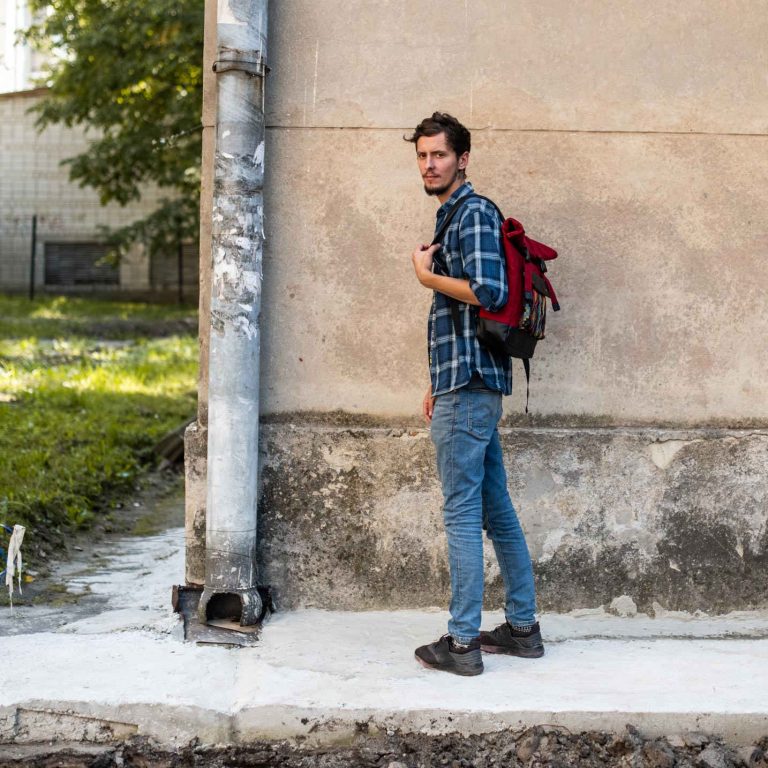Sashko Horondi’s story begins with running away from home in Zakarpattia and living for a few months at the Lviv train station. It continues in his attempts to find a job, restoring old furniture while searching for something of his own. A search that eventually led him to a thrift store for fabrics. Sashko sewed his first backpacks from old shirts, an activity he considered a form of therapy. He almost gave up hope since his backpacks were not selling, but social media helped to quickly spread his story. Today, Horondi is one of the most well known Ukrainian brands. Materials are ordered from abroad but almost every item includes a colorful strip of fabric as a remembrance.
The success of Ukrainian brands over the past few years has been impressive. New names pop up every year, creating more and more forms of self-expression through clothes and accessories. “Made in Ukraine” increasingly has come to mean modern, high-quality, and eco-conscious.
While old garment factories failed to adapt to the modern market and have gradually shut down, small manufacturers in contrast have managed to be successful. Though they cannot compete with the big companies in quantity, they receive much more recognition amongst consumers.
Horondi, Sashko’s brand, is one such manufacturer. It all began when a friend once asked him to sew a makeup bag, then another one. After that came multiple attempts to sew his first backpack. Today, Sashko employs a few people and the orders are scheduled ahead.
From Mukachevo to Lviv
Sashko is now 28 (as of 2019 — tr.). Ten years ago he ran away from his home in Mukachevo by getting on a train bound for the unfamiliar city of Lviv. At home, he had become tied in with the wrong crowd, one with an internal hierarchy where those of higher rank routinely collected fees from the lower members:
— The youngest one would give money to the middle one, and the middle one to the oldest. We were forced to pickpocket or rob or do similar things like that. Now you can’t tell by looking at me, but that’s what we used to do. Some would steal from their own homes. Stuff like that. Sometimes the police would come to your home and eventually I even got a criminal record. That was somewhat of a red flag for me. I remember how a policeman told me something like, “escape the city or I don’t know. You will all go to jail.”
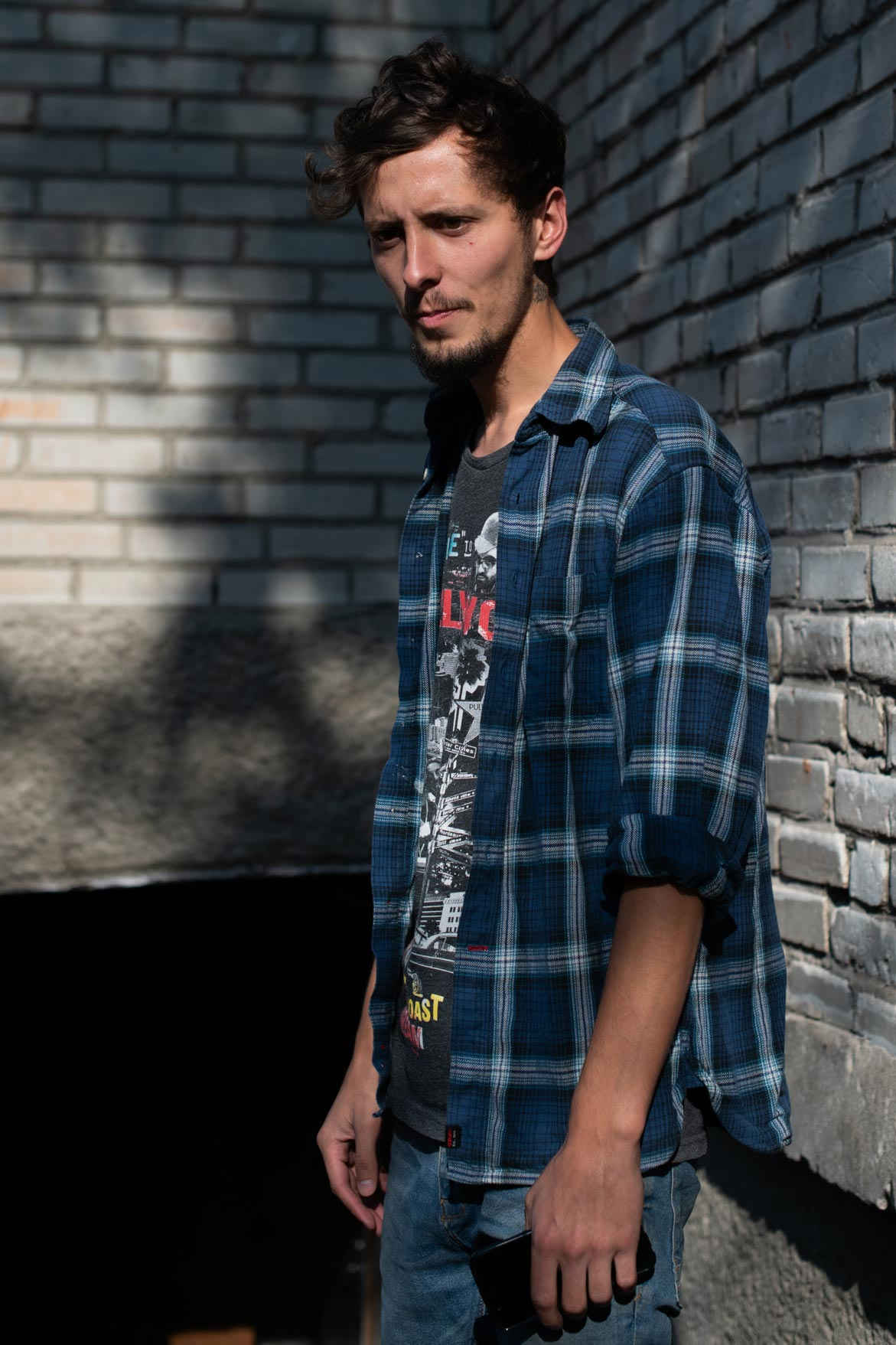
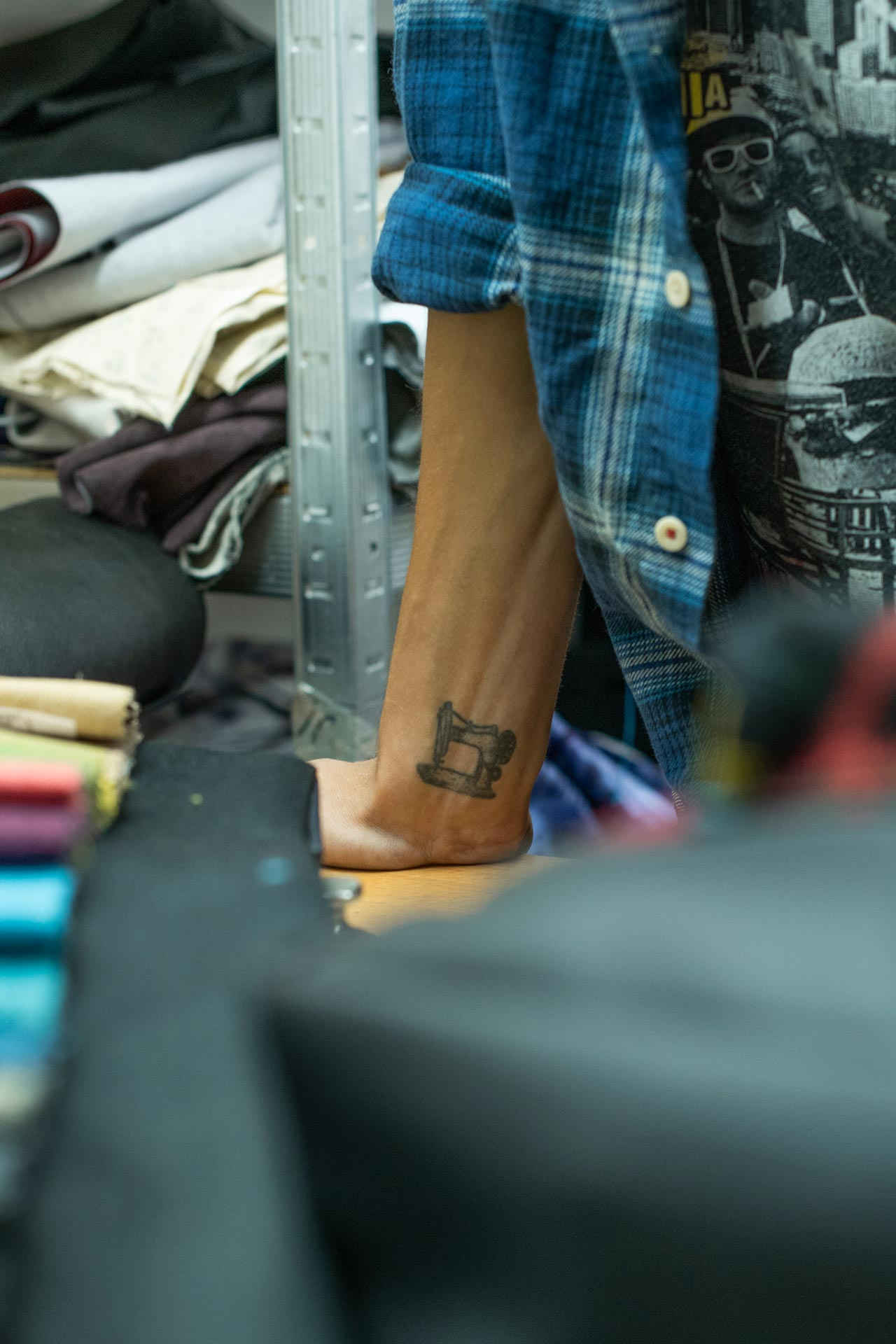
Sashko came to Lviv with only 20 hryvnias in his pocket. He slept in the train station’s attic and rummaged through the trash bins for something to eat. He learned that he could get pocket money from the grandmas selling used items outside the train station if he collected books, kitchen appliances, or clothes from the landfill for them. He did not believe that people help others out of a sincere desire to serve without receiving something in return. Which is why the free meals provided by a Protestant church, homeless shelters on Kyrylivska street, or the Emaus Oselya community seemed illogical and strange.
Emaus Oselya helps the homeless and people with difficult life circumstances to re-establish themselves in society by providing practical jobs and a place to sleep. Sashko calls Oselya “small communism”: all the funds are shared, split equally, and spent on communal needs. The organization does not rely on external funding and has to come up with creative ways to earn money for its operation:
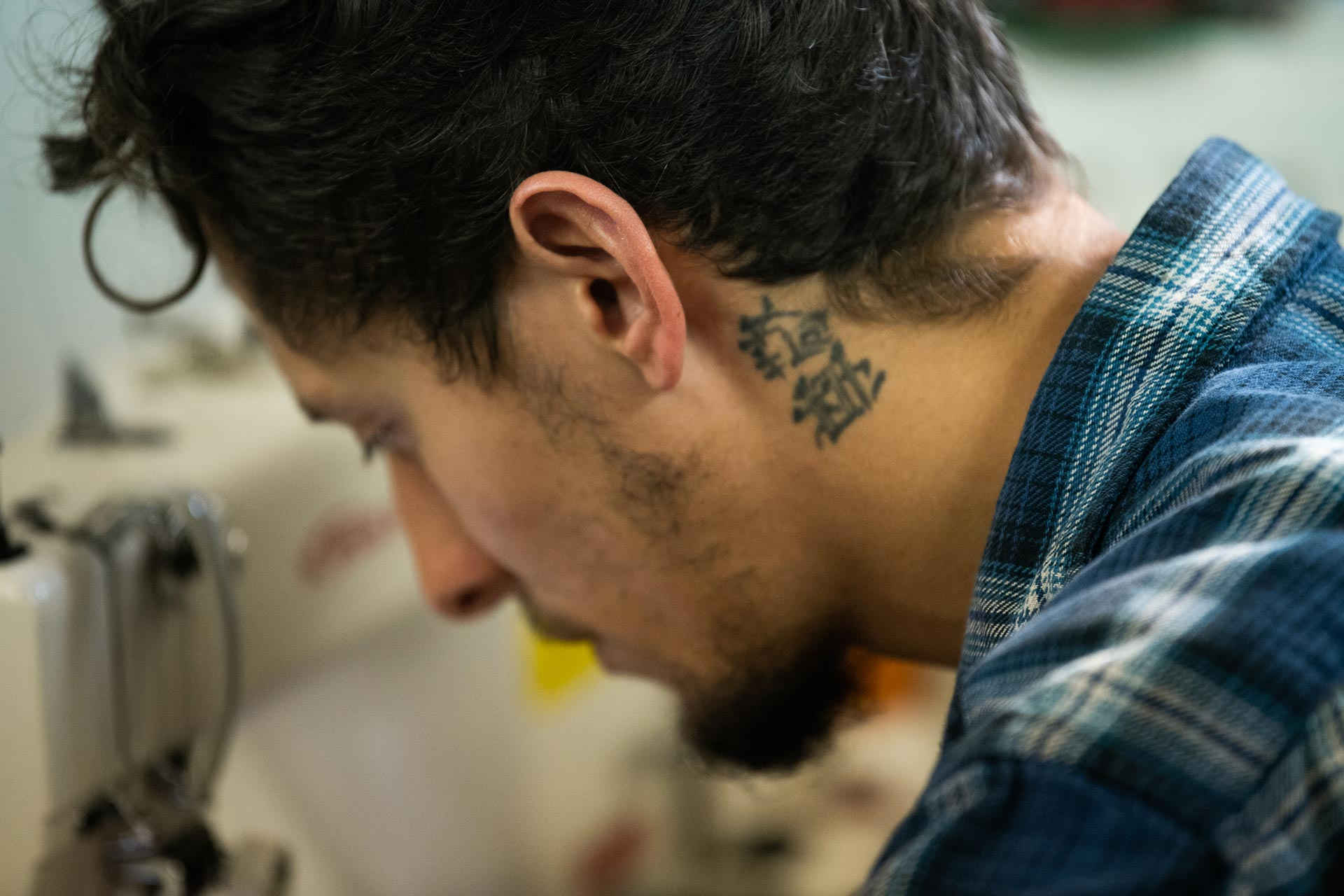
— It offers various things for the different people who come — a sort of protection, a way to quit drinking, or even as a meaning of life. For me at the time it was just a freebie, something that simply fell from the sky. I was given free food, clothes, pocket change, and some work. When I came, on the first day they gave me a shovel and said “go clear the snow on the street.” It was great! I was doing something and didn’t have to rummage through trash bins anymore.
Since he only spent three months on the streets, he never got used to that lifestyle, which made it easier to return to society. With time, Sashko got a job upholstering furniture that he didn’t much enjoy, unlike his temporary job as the homeless shelter’s administrator. And so he gathered enough courage to leave the job and took a chance starting his own business.
The first backpack
Sashko did not see a future for himself in his work upholstering furniture. The job that Emaus Oselya provided was a source of income but brought no satisfaction:
— I had to constantly force myself to go there. I would wake up thinking, “Oh this freaking job.” I counted down the minutes of each shift. When I started making backpacks in the evenings, I barely earned anything from it. But despite everything, I enjoyed doing it. So I decided that I’m better off doing something that I actually like.
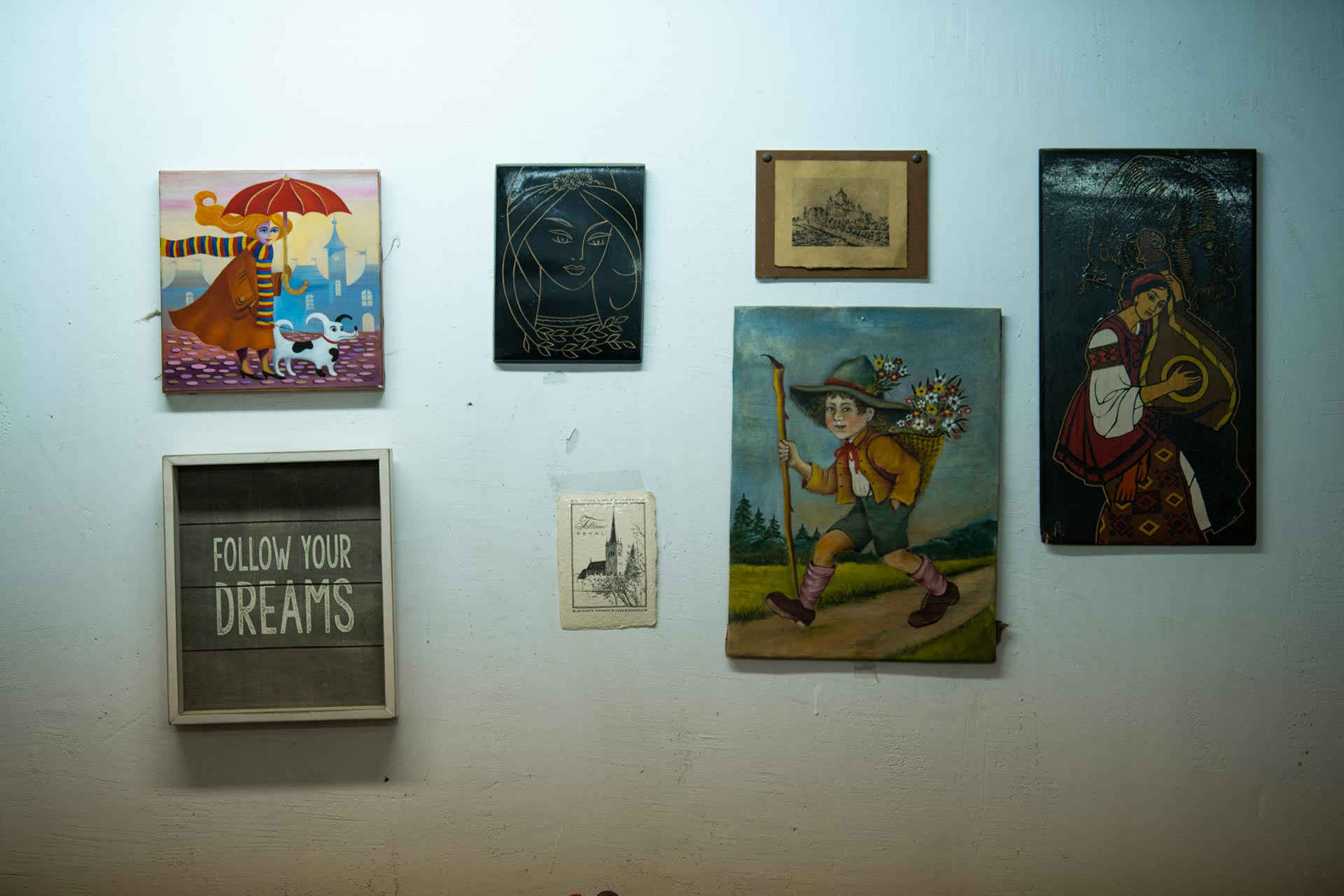
After Olesya Sanotska passed away (she was the founder and manager of Emaus Oselya), Sashko faced a choice to either continue doing social work or take the risk and start making backpacks full-time. She was the one who first insisted that he take his handmade items to a garage sale and finally try selling them. She argued and persuaded him that his work had value. Sashko was resistant:
— I made backpacks for the sale and then sold them all in half an hour or an hour. That was insane. I remember how she (Olesya) came up to me and asked, “Well? Where did your backpacks go?”
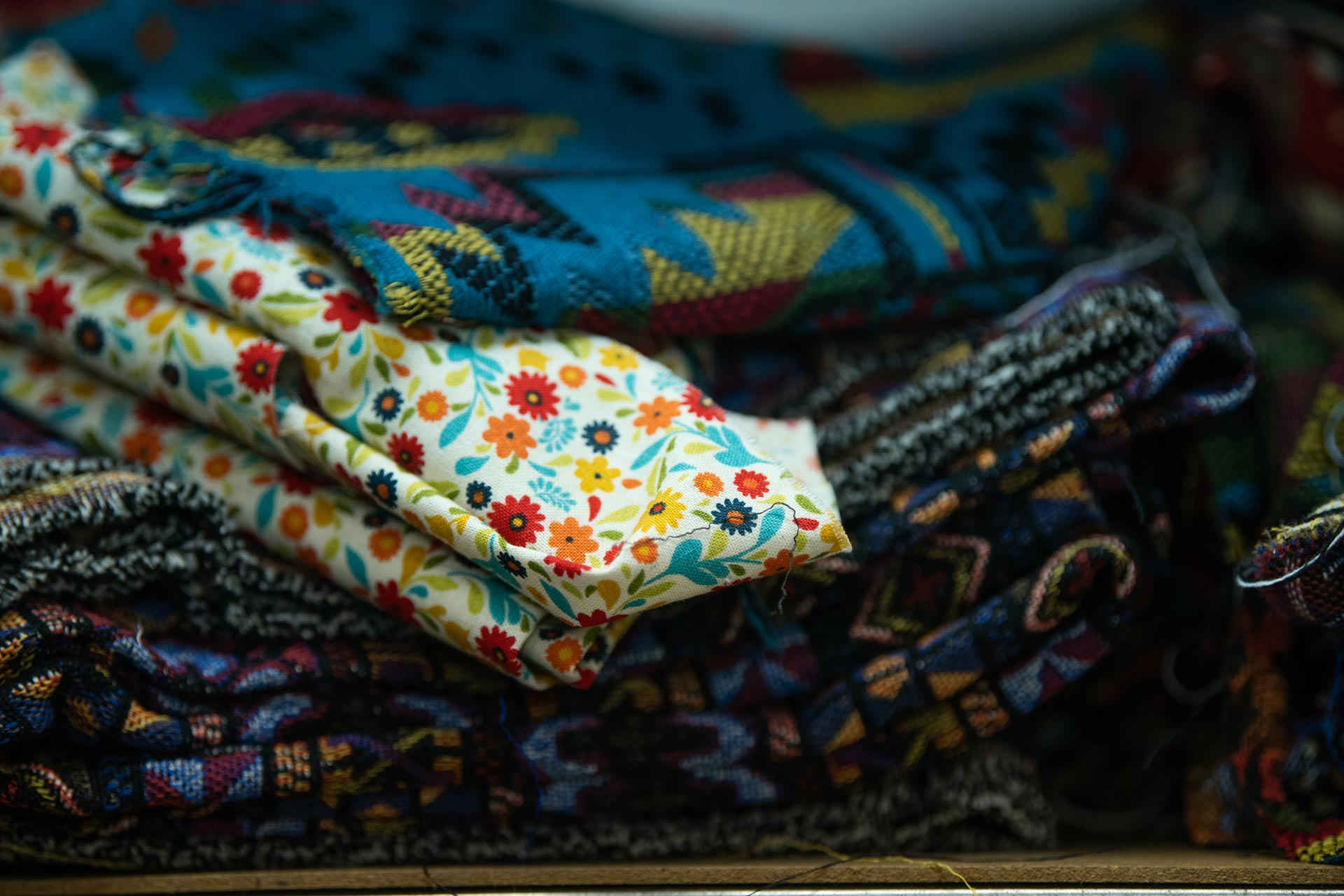
The materials improved along with Sashko’s skills. At first, he would use thrifted clothes. Oselya has a donation center for its own thrift store, where volunteers sort and sell the used clothes. Some of it is given away to the homeless, while the profits are used to provide free meals.
Sashko used shirts or jackets from that store for his first backpacks. After he began to make some profit he was able to afford smaller cuts of fabric from wholesale shops, and now he goes to Poland or searches locally in Lviv for even higher quality textiles.

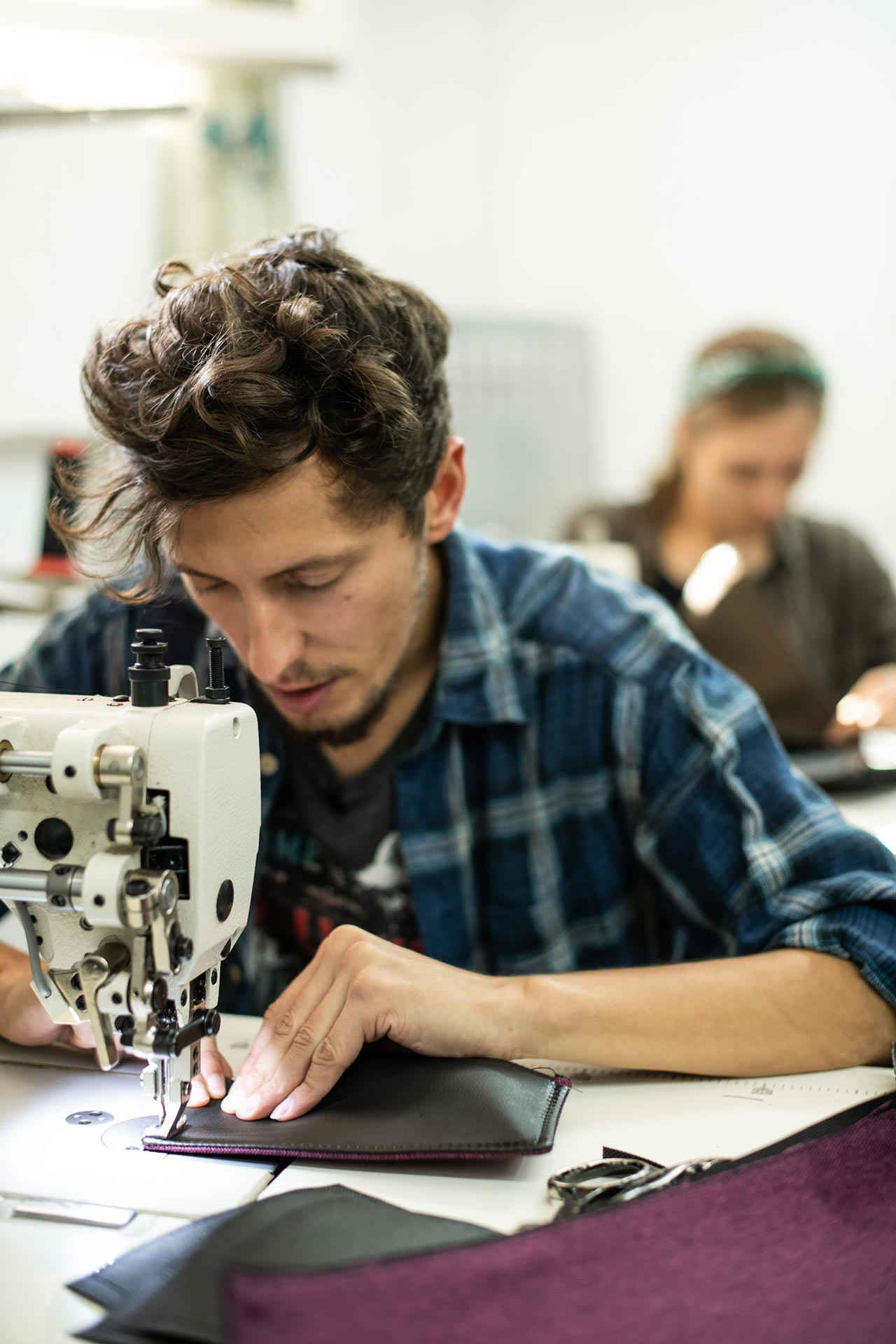
At first, he was using sewing machines donated by volunteers, then borrowed money to buy a new one. Later after receiving a grant from the British Council for the development of entrepreneurial skills in students and new businessmen, he was able to buy even more equipment.
Of course, Sashko experienced a lot of ups and downs before his business stabilized and became profitable:
— I would get disheartened when, for example, after I left the furniture job and switched to making backpacks there weren’t enough orders or sometimes even no orders at all. Dang it. Then I would drop the backpacks again and go back to upholstering furniture. That happened twice. And then later I hired a girl but there was no work to do. It was tough.
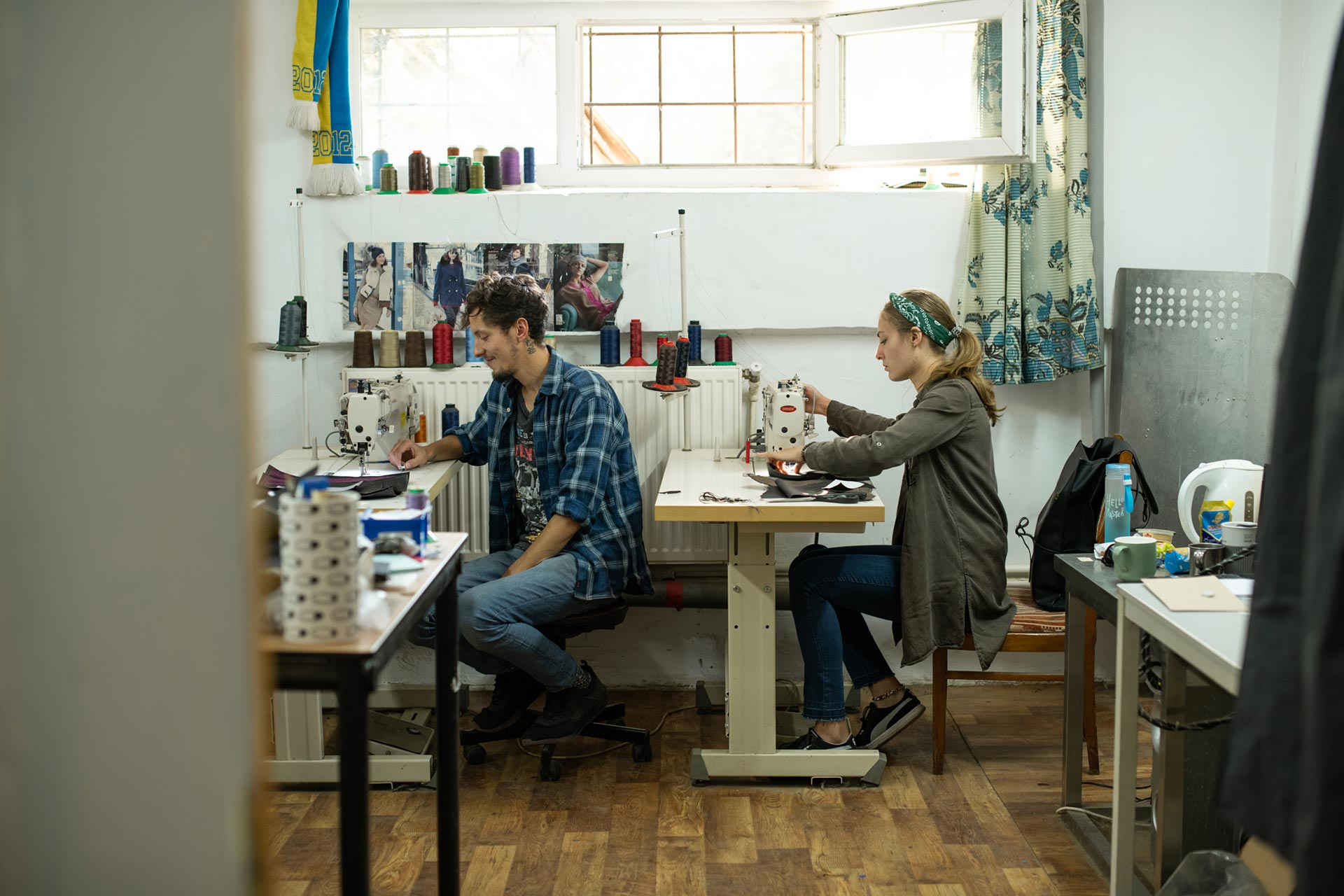
Not a job
Currently, Sashko makes a few backpacks a day and has two employees (as of 2019 — tr.). He is looking for opportunities to purchase more sewing machines and hire more people. Things improved thanks to a few Facebook posts. Journalists and bloggers who purchased his backpacks shared the brand on social and mass media. Now orders come from abroad as well, from Europe, the USA, and Canada. One backpack was even sent to Australia:
— I never give myself the credit for this. It’s just that in specific moments people supported me.
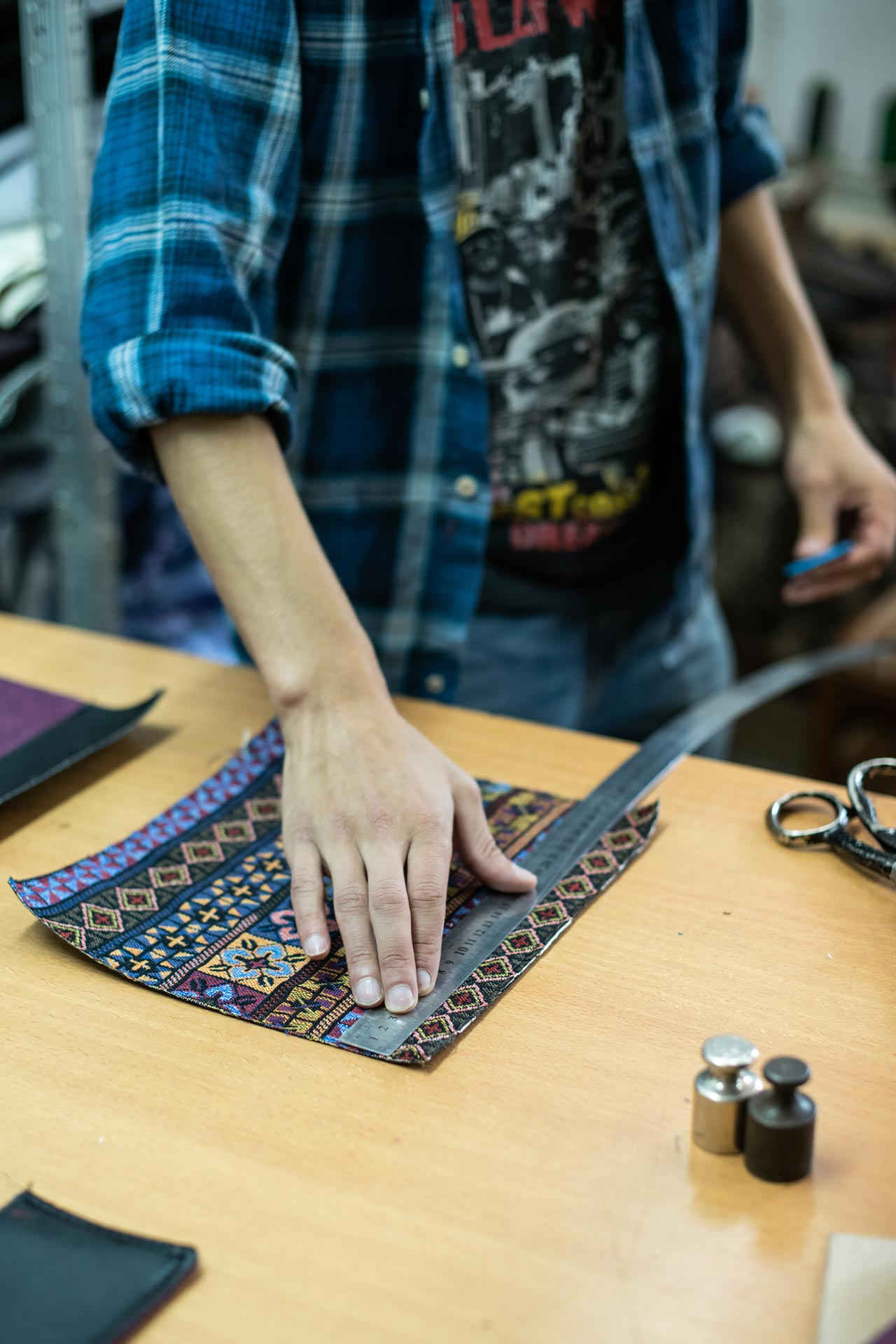
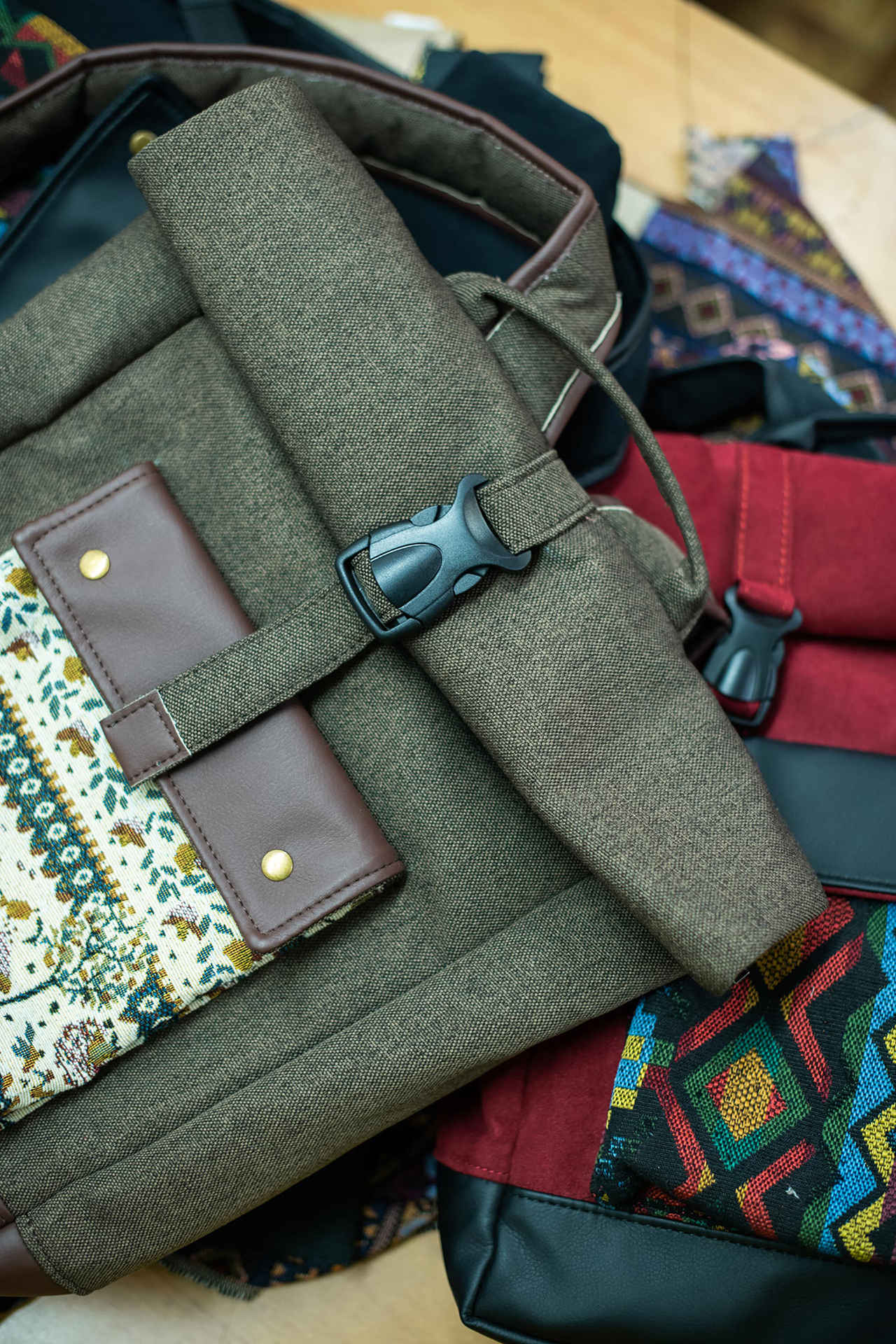
Sashko jokes that though he makes a living he still cannot afford an iPhone quite yet. Though he is not interested in those kind of expenses:
— This money can be used in other ways, to buy more equipment or something… like buying new fabric, or going to Turkey and exploring their fabric market. Their market is very well developed. It is definitely not the same back here. Yeah, but I still can’t believe that everything is going so well. It’s a freaking miracle.
He doesn’t know the total amount of backpacks he has manufactured; he lost count. Besides his backpacks, which are all waterproof, Sashko also makes fanny packs, purses, and wallets.
Most orders come in autumn, winter, and spring. In the slower summer months Sashko and Kateryna make backpacks for stores that are also interested in their brand.
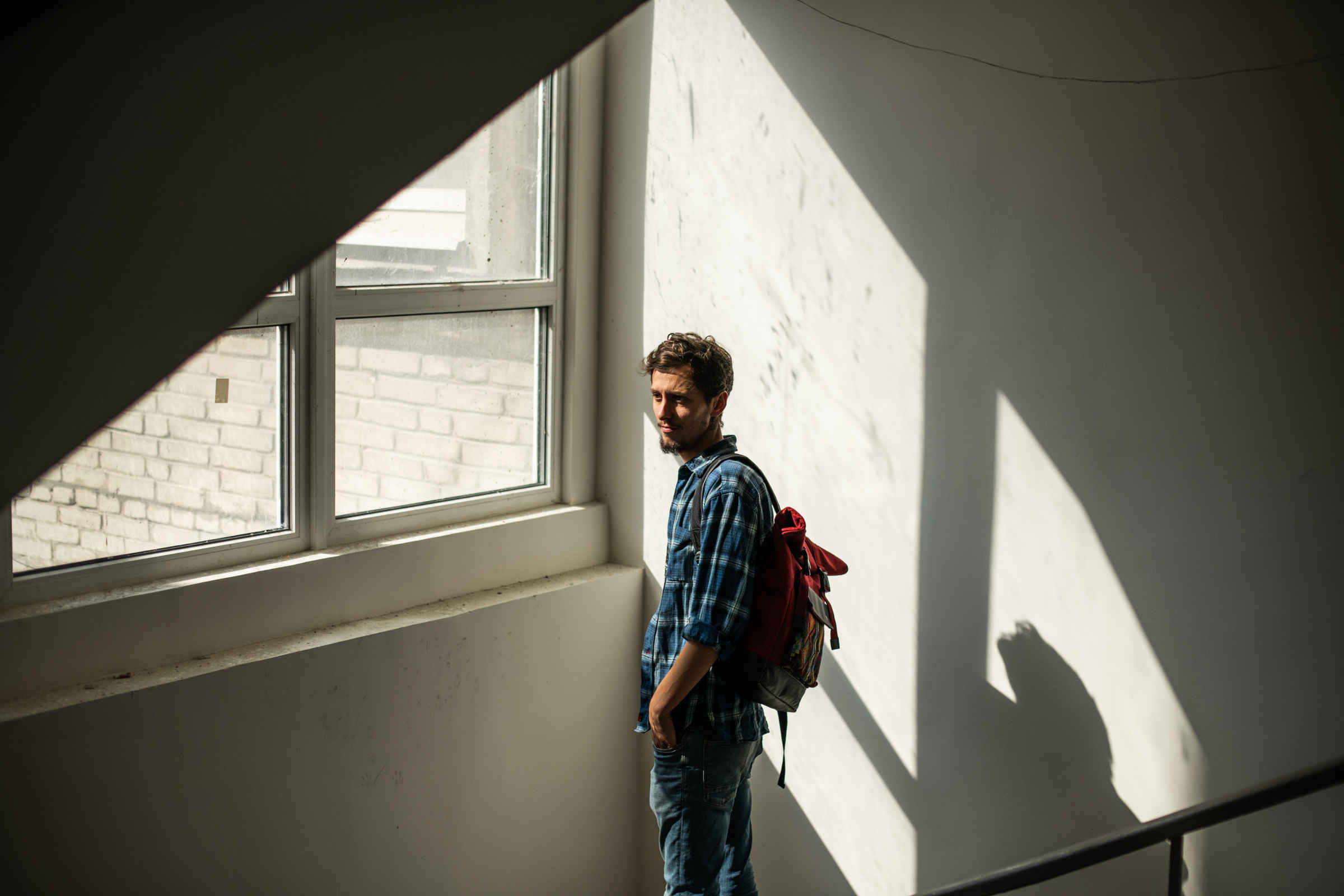
These days you can find and purchase handmade items anywhere. They are more expensive, higher quality, and not designed for the mass market. Talented craftsmen oversee the creative process of every item and don’t treat any aspect of production as a mechanical routine. Sashko still considers Horondi more as a hobby that also happens to be profitable:
— I don’t even have a set schedule, I work from morning to night. I almost feel like I won’t have any friends left soon because I never see them and instead I stay at work, sitting here in the basement. I don’t know, for me, it’s kind of like therapy at times or something similar to that. I mean, I don’t feel tired or like “gotta go to work.” For me, it’s not even a job.
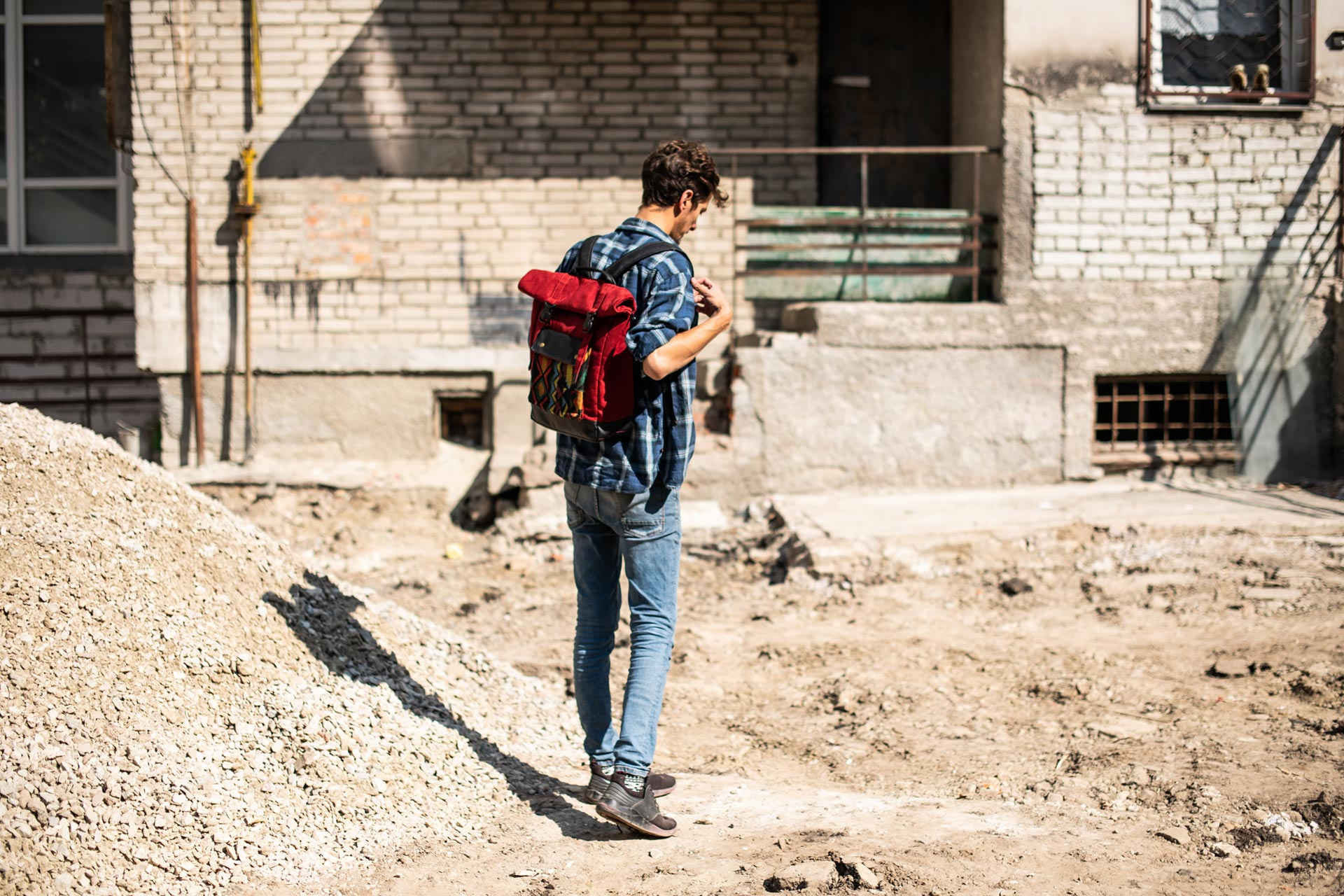
Customers are actively involved in the whole process once they purchase a backpack from Sashko. After placing an order, they specify their desired model, color, and shape. Even after receiving the order, customers often reach out to express their thanks for the product. Though in reality, it is Sashko who is thankful for their order as he appreciates their trust in him. The hand-made culture facilitates a whole new level and quality of communication between customer and manufacturer. Sashko also says:
— The time when I lived on the streets, all of that. I think back to that time a lot. No, I’m not sad, nah. Rather, I motivate myself with it, when some hardship comes I respond with optimism. Something bad has to happen for me to turn in the right direction. But I am not sad, I don’t regret any of it, no. It was kinda hard, but now I understand that if I didn’t go through it, I wouldn’t be who I am today. No matter how cliche that sounds.

